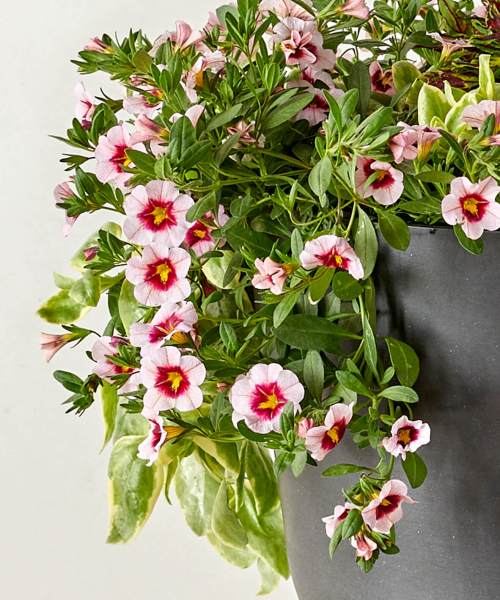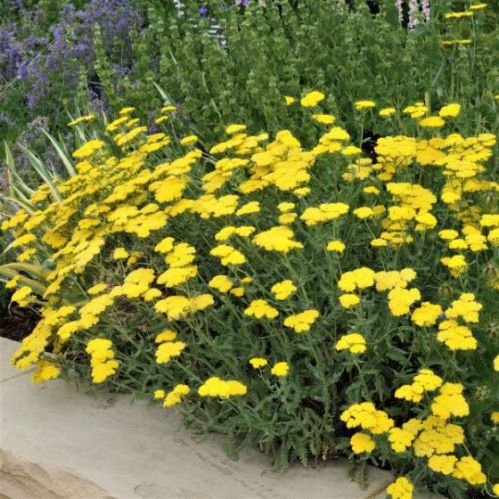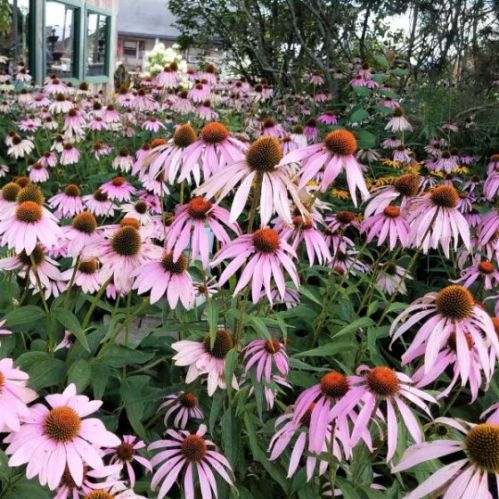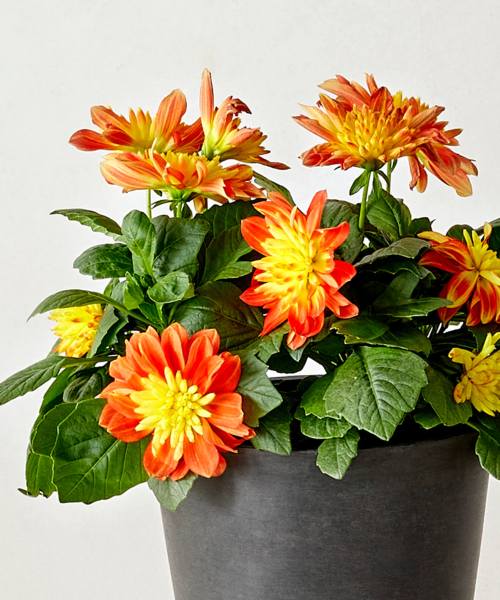Our editors independently select these products. Making a purchase through our links may earn Well+Good a commission
A yard awash in bright sunlight is dreamy in its own right—particularly if you have windows that let the light leak indoors—but it’s a particularly prime setting for growing full-sun plants. “Full sun” is a designation for plants that thrive in any space receiving at least six hours of direct rays per day, says Joyce Mast, Bloomscape’s “plant mom” and resident plant expert. (By contrast, part-sun, part- or dappled-shade, and full-shade plants have their own lighting requirements.)
Experts in This Article
Eden Haskins-Dahl is the assistant manager at Pistils Nursery in Portland, Oregon, and an expert in outdoor plants.
horticulturist and resident plant mom at Bloomscape
To clock your yard’s sun exposure in order to determine what kind of light your space gets, observe where the sunny patches fall each hour throughout a day, noting the shifts over time, and taking into account how walls, buildings, and tree branches deflect rays from otherwise sun-soaked regions. (You can also whip out a compass for some extra help here; areas with southern exposure are typically the sunniest for most of the day.) If you’ve determined that your yard is the happy setting for at least six hours of sunlight per day (lucky you!) and you’re eager to enliven it with fresh blooms and greenery, choosing full-sun plants will help ensure that they survive and thrive. These particular perennials flourish in sunlight and can withstand high heat, too.
As for choosing the best full-sun plants for your yard, first consult the United States Department of Agriculture (USDA) Plant Hardiness Zone Map, which divides the country into zones based on average minimum temperatures (starting at Zone 1 for the coldest spots), and consider your soil quality (that is, if you’re planting in the ground, as opposed to setting up a container garden).
In addition to noting sunlight exposure, it’s great to know how to water your plants like a pro. For some intel, watch the video below:
After getting a sense of your geographic zone, keep reading for the favorite full-sun plants of Mast and assistant manager at Pistils NurseryEden Haskins-Dahl, all of which are relatively low-maintenance and suitable for newly pruned green thumbs. “While it’s typically best to start seeds in the springtime, if you’re just getting started now, you should still be able to find all of these plants at your local nursery,” says Haskins-Dahl. Another bonus: They’ll typically stock the cultivars that are suitable for your zone, she adds, which removes the guesswork of choosing which full-sun plants will thrive in your space.
Here are 6 full-sun plants great for enlivening an extra-sunny yard

Pink Calibrachoas Accent Kit — $25.00
Bunches of little petunia-like blooms give calibrachoa its common name of “million bells” and make it an ideal outdoor plant for trailing over the edges of a container or serving as ground cover. Mast loves the Uno Pink Strike variety for its dazzling purple-to-pink color—and like most calibrachoas, it’s easy to care for. “Water often, just before the soil gets dry, as they do not like to fully dry out,” says Mast. (As a reminder, Haskins-Dahl says, container plants always require more frequent watering than plants in the ground, since they aren’t able to draw water and nutrients from surrounding soil.)
If you’re planting directly in the ground, also make sure your soil is well-draining and rich—or amend it with compost if it feels silty or sandy to the touch. And typically, you don’t need to deadhead calibrachoas (i.e. remove their spent blooms), adds Mast, “but if they start getting leggy or stretched out, feel free to trim the flowers and foliage back to promote growth.”
Best in zones 9-11

Moonshine Yarrow — $40.00
A sprawling plant with tightly packed flowers, yarrow is best planted as ground cover or along garden borders—and this bright Moonshine variety will add a pop of yellow to any space. It does best in nutrient-poor soil, says Haskins-Dahl, so there’s no need to supplement with fertilizer or compost. (In fact, if the soil is too rich, yarrow may require staking due to a surplus of flower growth that its legs can’t support.) It’s also generally drought-tolerant, so once the plant is fully established, it’s best to wait until the soil fully dries out between waterings.
Since yarrow tends to spread, space plants at least a foot apart. And prune back all the spent flowers at the end of the season using a hand pruner to encourage healthy growth next year.
Best in zones 4-7

Magnus Purple Coneflower — $30.00
Commonly called coneflower, showy echinacea blooms in clusters, shooting up to three feet tall. “It prefers a richer, well-draining soil, so it’d be smart to come in with a hearty compost, and to top off your garden bed with mulch every season,” says Haskins-Dahl. You’ll also want to water frequently as echinacea gets established and then can taper off a bit. “And remember to water at the base of the plant, rather than pouring from the top, so that you avoid soaking the blooms themselves, as that can cause disease,” she says. Deadhead at the end of the growing season.
Best in zones 3-9

Red and Yellow Dahlias Accent Kit — $25.00
Big and beautiful blooms make dahlias a garden standout, and this Dalaya Fireball variety is no exception: Like its name says, each of its flowers is like its own eye-catching firework. These plants are frequently thirsty, so it’s best to water them regularly as they get established, says Mast, and particularly in extra-hot regions or during summer dry spells. This particular type does well in a container, though you can also plant dahlias directly in the ground about a foot apart, so long as your soil is well-draining; if it’s compact or clay-rich, add some sand or peat moss to lighten and loosen the texture.
Best in zones 8-11

White Petunias Accent Kit — $25.00
Like dahlias, fluffy petunias prefer lots of water (though again, be sure to water at the base of the plant and steer clear of splashing the blooms themselves). Mast also suggests fertilizing petunias one to two times a month to keep them full and healthy by using a liquid fertilizer, or by adding a slow-release fertilizer to the soil according to the package instructions. And if you notice the plants starting to get leggy, feel free to trim the flowers and foliage back to help with fresh growth. “They will branch out and re-bloom as a result,” Mast says.
Best in zones 9-11

Autumn Joy Sedum — $44.00
About as low-maintenance as you can get, drought-tolerant sedum is actually nicknamed stone crop because it does so well in dry, rocky soil. It also grows great in containers, and, true to its nickname, doesn’t require much water. “Like other succulents, sedum stores water very well in its leaves, so you could go a couple weeks between waterings,” says Haskins-Dahl, who loves the Autumn Joy variety. “It’s a bit larger and the flowers turn from pink to this pretty rust color throughout the season,” she says.
Best in zones 4-9
Oh hi! You look like someone who loves free workouts, discounts for cult-fave wellness brands, and exclusive Well+Good content. Sign up for Well+, our online community of wellness insiders, and unlock your rewards instantly.
Sign up for the Well+Good SHOP Newsletter
Get exclusive deals on wellness, beauty, fitness, and food products that have been hand-picked by our editors.
Got it, you've been added to our email list.









